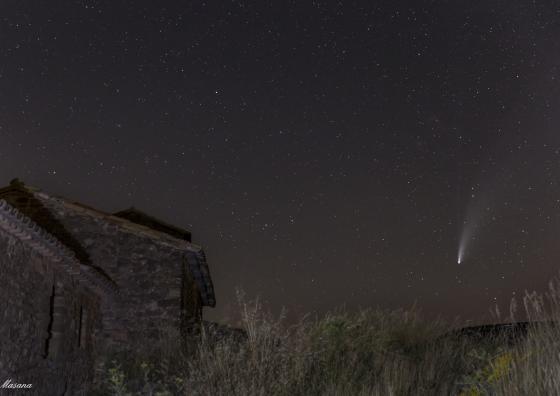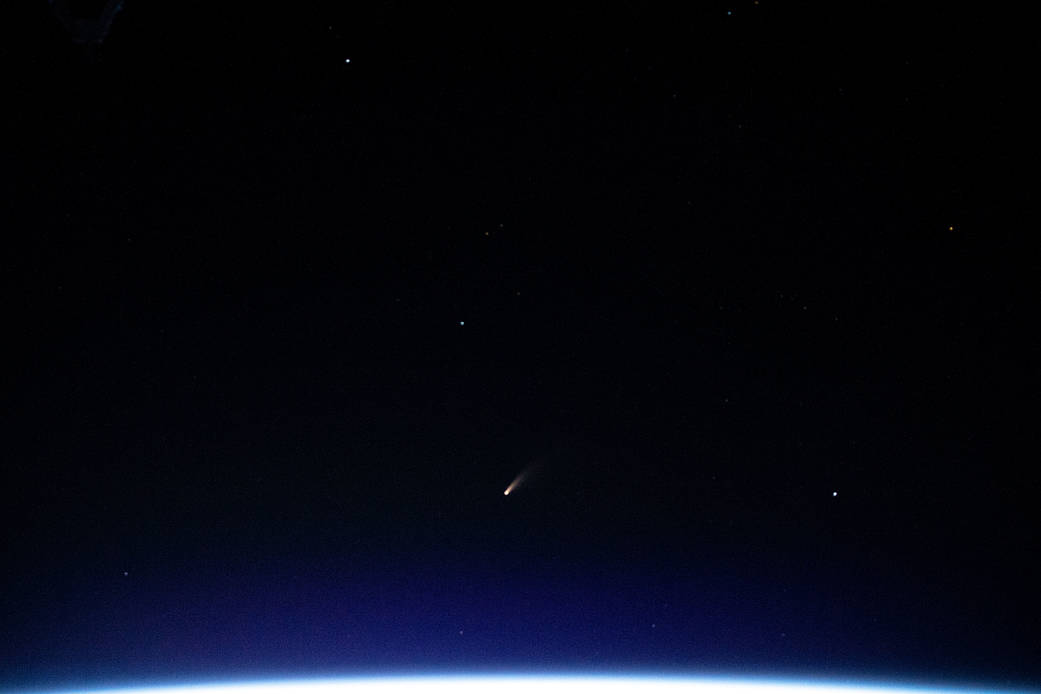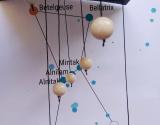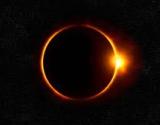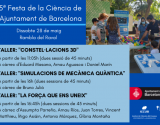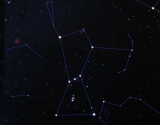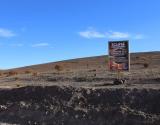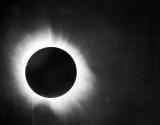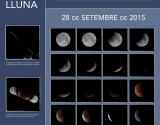The comet C/2020 F3, also known as NEOWISE, has been visible to the naked eye in the northern hemisphere sky during the past weeks. Named after the first telescope to detect it – the NASA's Near-Earth Object Wide-field Infrared Survey Explorer - it reached its closest point to the Sun on July 3. During these days, it is visible in the night sky.
There are 3,652 comets that we know of. Comets are cosmic bodies of ice, rock and dust (often said to be dirty snowballs) that orbit the Sun in elliptical or even parabolic orbits. When frozen, they are the size of a small town. When a comet's orbit brings it close to the Sun, it heats up and spews dust and gases into a giant glowing head larger than most planets. The icy part of most comets partially evaporates and two tails form. One of them is formed by gas from sublimated ice and part of the released dust and forms the trail seen in most comet images. The other tail is made up of ions, which are electrically charged gas molecules, in the form of ionized gas carried by the solar wind, stretching away from the Sun for millions of miles.
Studying NEOWISE
NEOWISE is a comet about 5 kilometres in diameter, which follows a retrograde orbit and is particularly bright, making it visible to the naked eye without the need for binoculars or telescopes. Furthermore, its brilliance makes it particularly interesting to researchers, who can track it with multiple telescopes and obtain more and better data than they usually get from other comets.
The comet orbits the Sun with a period of just under 7000 years and travels at a speed of about 65 kilometres per second - or the equivalent, 230,000 km/h. Originated in our Solar System, it is currently at a distance of 111 million kilometres from the Earth. The researchers at the NASA Jet Propulsion Lab that study NEOWISE’s features have seen that it contains an amount of water equivalent to 13 million Olympic swimming pools, which is more than the average comets. Also, experts believe that its tail is composed of atomic sodium.
The image on the right corresponds to the first image of the comet, captured by the NEOWISE telescope on March 27, 2020. The comet appears as three red dots, corresponding to the composition of three infrared images of the telescope.
Observing NEOWISE
NEOWISE has been the target of both telescopes, professional and amateur cameras, during the past weeks. Astronomy fans have been delighted by its glow, following its trail and flooding the social networks with pictures.
Our astronomer Eduard Masana, ICCUB-IEEC researcher and member of the Gaia team, took two photographs from the Sant Cugat de Gavadons hermitage, in Collsuspina (Barcelona). The photographs are downloadable in high resolution in the links to the attached files.
Are you an astronomy fan? Do you know how to observe comets? Check out our tips on how to observe meteor showers, NASA's recommendations for observing NEOWISE or the tips for photographing comets and star showers.
